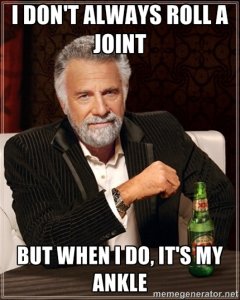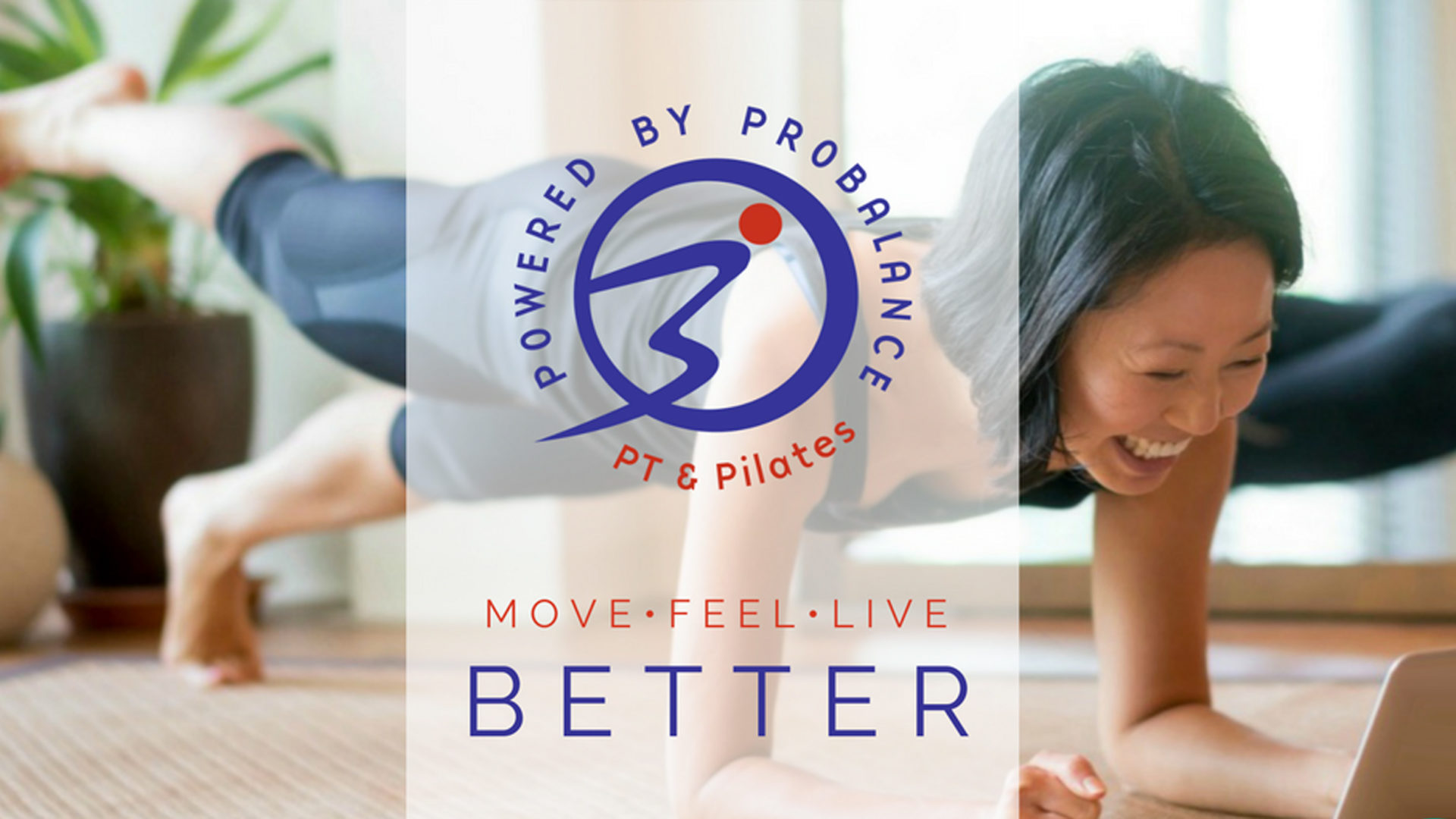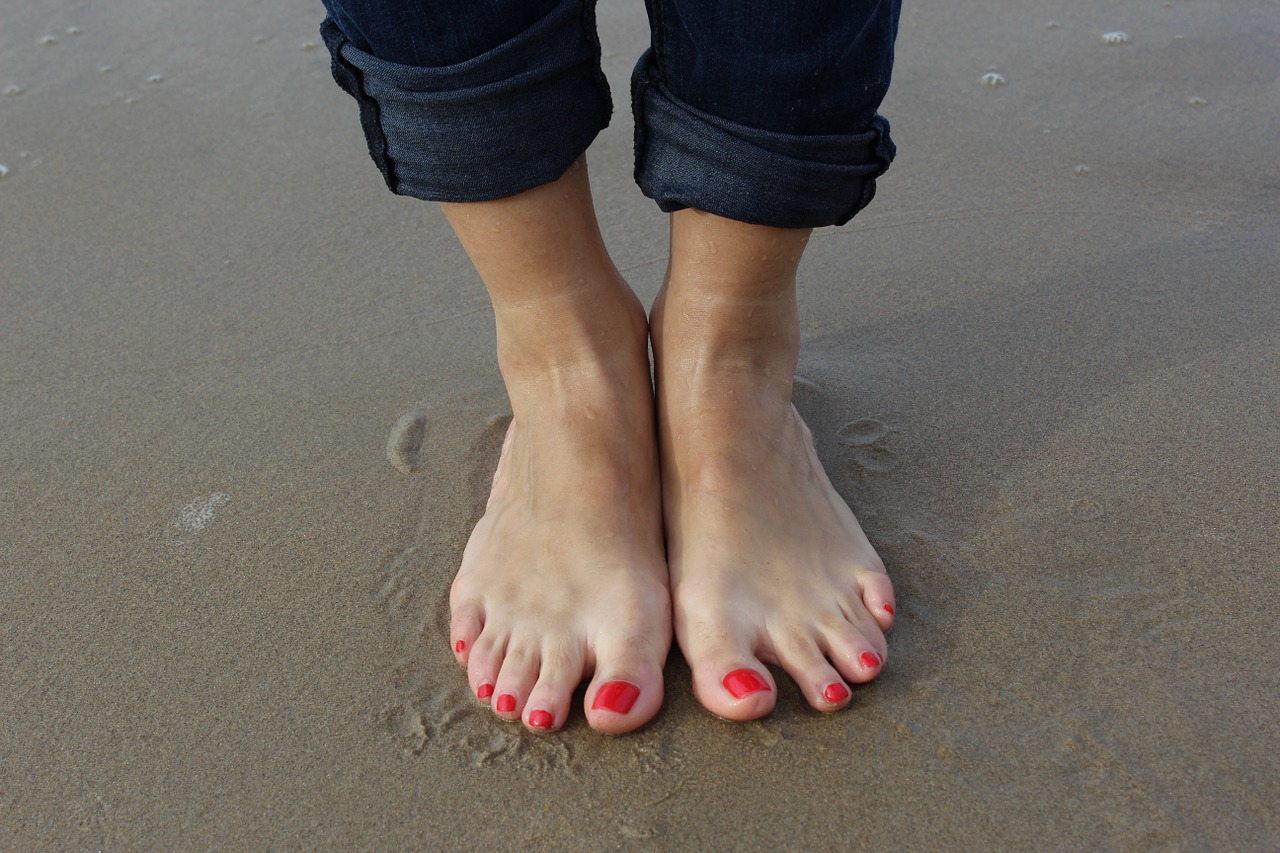 You’re walking along, minding your business and BAM!
You’re walking along, minding your business and BAM!
Suddenly, you find yourself on the ground after rolling your ankle.
You had some initial swelling, but now, it’s about a month later…feeling a bit better, but there’s some nagging tenderness and swelling at the end of a long day.
What do you do?
You’ve heard taping might help, but want to make sure you’re not creating more harm than good.
Well, my advice as a physical therapist is to get it looked at by a medical professional early on as there are definitely some things we can do to help both in the short and longer term.*
This is especially important if you suspect that there has been more damage than just some strained ligaments.
Now, let’s say it’s just a simple sprain…why is it still sore?
THERE ARE A FEW THINGS TO CONSIDER…
- How did you sprain your ankle in the first place? Was it playing a sport? Was it just walking down the street? Was it wearing your favorite high heels? These questions are important to determine what direction you sprained it and what ligaments may have been involved. The most common injury is called an inversion sprain, which affects the ligaments on the outer (lateral) part of your ankle.
- Have you sprained or injured your ankle before? This is good to know because perhaps you already have some ankle instability from prior sprains. When you sprain ligaments, the proprioceptors (the receptors within the ligaments that help you know where your joints are in space) may not respond properly. If you haven’t rehabbed your ankle correctly in the past, you might still have some lingering issues both at the ankle and also in the entire lower body. This can make you vulnerable to future sprains.
- How strong are the muscles in your lower leg? Sometimes, especially in the case of a bad sprain where you had to be off of it for several days, you can develop additional weakness (that might be on top of some weakness you might have already had before the sprain). A good test is to see if you can stand on your toes, with one foot while keeping your foot alignment.
- How much movement do you have when you flex your ankle? The exact term for this is dorsiflexion. Dorsiflexion is your ability to bend at your ankle so that the top of your foot becomes closer to your shin. If you have some residual swelling, this motion can become limited…especially if it has been for a longer period of time. This is significant because lack of mobility here, when you’re walking, will then transfer some of the spins and glides of the ankle joint to a different area where you shouldn’t have that mobility (like the knee or to the arch of the foot.) I’ll address this issue in other posts.
What your answers are to those above 4 questions can influence how well your ankle responds to any intervention so keep this in mind as you read on.
SO…BACK TO THE ORIGINAL QUESTION…WILL TAPING YOUR ANKLE HELP?
This depends.
For some it will definitely help and for others, the jury is still out.
If you have a large amount of ankle instability, taping alone may not be enough. A study by Raymond, et al in 2012, found that when patients who had recurrent sprains with significant functional instability (meaning that they had poor proprioception), taping wasn’t shown to be helpful.(1) That being said, the authors pointed out that that is not a reason to not tape or brace the ankle as no harm was done using these techniques.
Another study by Hale, et al 2007, found that people with chronic ankle instability also had issues with postural control, but that these deficits could be improved through targeted exercise programs.(2) Having adequate postural control is so important if you want to stay active without hurting yourself everytime you make a wrong move. Hint…Pilates based exercises incorporate postural control into every exercise, which is great for returning back to an active lifestyle.
However, here is a type of tape that is helpful for improving postural control, not only in the ankle, but in other areas of the body, and this is called kinesiotape.
Kinesiotape has elastic properties and can be used for improving circulation, decreasing swelling (aka edema), reducing pain, improving muscle function, and helping to enhance proprioception.
Wilson & Bialocerkowski, 2015, performed a systematic review of the literature which showed positive trends with the use of kinesiotape to help prevent sprains in healthy ankles to and improve muscle endurance and proprioception injured ankles.(3)
Since kinesiotape is waterproof and can stay on sometimes for up to 5-7 days, its positive effects on proprioception, muscle endurance, and activity performance can make the difference between you sitting on your couch or you getting back to your prior activities.
There are various ways to apply kinesiotape and this is where a physical therapist, athletic trainer, chiropractor, etc. who is trained in the application of this type of tape can maximize the benefits of using this tape.
Comment below if you have had a sprained ankle. Have you tried kinesiotape or another form of taping. I’d love to hear about it.
Make sure to sign up for the ProBalanceTV insider to be the first to receive health and wellness extras that complement these posts and to stay up to date on the best ways to keep your body working well.
- Raymond J, Nicholson LL, Hiller CE, Refshauge KM. The effect of ankle taping or bracing on proprioception in functional ankle instability: A systematic review and meta-analysis. Journal of Science and Medicine in Sport. 2012; 15: 386-392.
- Hale SA, Hertel J, Olmsted-Kramer LC. The effect of a 4-week comprehensive rehabilitation program on postural control and lower extremity function in individuals with chronic ankle instability. Journal of Orthopedic and Spots Physical Therapy. 2007; 37(6):303-311.
- Wilson B, Bialocerkowski. The effects of kinesiotape applied to the lateral aspect of the ankle: Relavance to ankle sprains-a systematic review.
PLoS ONE 10(6): e0124214. doi:10.1371/journal.pone.0124214.
*Disclaimer: While I am a physical therapist, I am not your physical therapist. Information presented on this website is for informational purposes only and is not to be substituted for advice given by YOUR health care practitioner.


